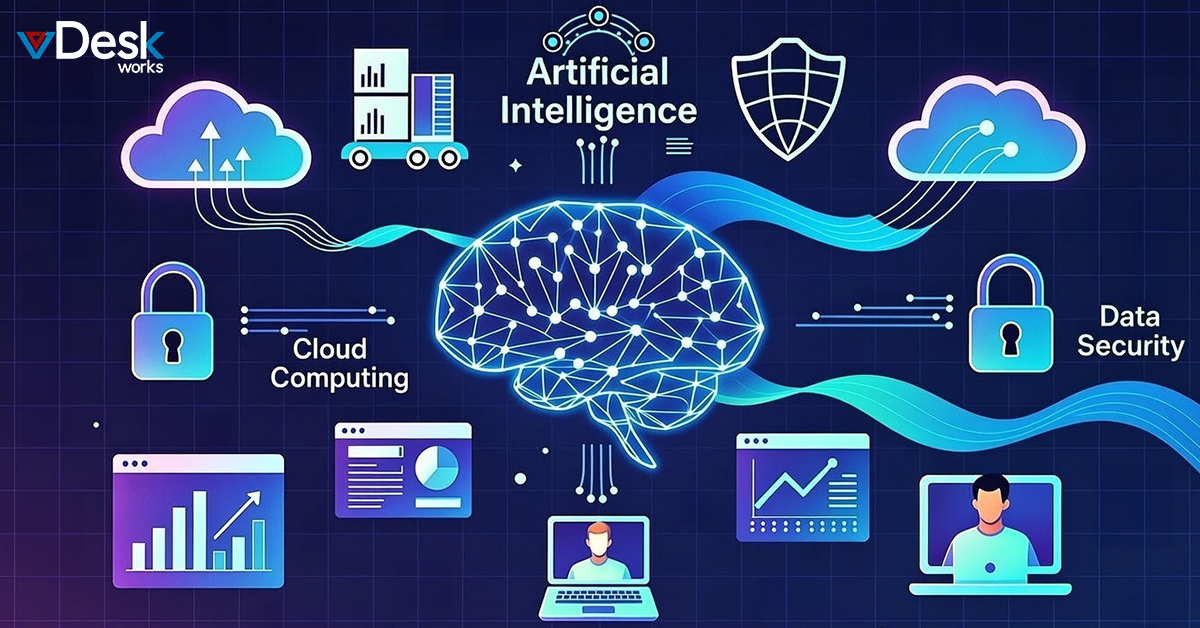As the world is moving towards a technology-rich future, cloud computing is transforming how businesses operate worldwide. In today’s times of remote and hybrid work culture, modern-day enterprises highly depend on virtual desktop computers to meet their business requirements.
What are virtual desktop computers?
Cloud or virtual desktops are hosted on cloud-based resources. They allow secure delivery of apps and desktops to the choice of device and location over the internet. Over the years, virtual desktop computers have changed how businesses store and access information. Here are the top five business challenges virtual desktop computers can solve:
Challenge #1: High Capital Expenditure
Capital expenditure takes away a large portion of the budget in the business world. Before the advent of virtual desktop computers, setting up a business required purchasing costly hardware and spending on the maintenance of servers.
Virtual desktop computers save businesses from purchasing those expensive computer workstations and hardware & software upgrades. Cloud service providers give business owners peace of mind by taking care of their hardware purchase, data security, and maintenance needs.
In the case of a virtual desktop computer, only a little upfront investment is required to run a business. So, one of the key drivers for companies moving to DaaS is that enterprises can slim down their hefty IT budget. It wouldn’t be wrong to say that costly hardware purchase is a thing of the past.
Challenge #2: Security and Disaster Recovery
Since workforce mobility has become dominant, companies have been highly concerned about data security. Businesses are more prone to security vulnerabilities when employees work from cafes, homes, and other locations.
Virtual desktop computers enable users to access apps and data from anywhere securely. With the adoption of the virtual desktop computer, business owners can enjoy peace of mind from knowing that their data is secure.
Even though data can be accessed from anywhere and on any device, no information gets stored on those devices. So, DaaS adds an extra layer of protection by keeping all data on the cloud instead of individual devices. No one can access company information if a device gets stolen because a business can block that device seamlessly.
Challenge #3: Rigidity and Limited Access to Data
Conventional business ways bind employees to their systems. So, access to the office desktop becomes the only way to accomplish a task. If a business faces downtime at odd hours, there is no option other than accessing office desktops.
Virtual desktop computers overcome this issue by providing more scalability and flexibility. Employees can access virtual desktop computers from their Macs, smartphones, tablets, Windows PCs, and Chromebooks. So, even if an urgency arises, employees can access virtual desktop computers from the comfort of their places. Since all data is on the cloud, employers don’t need to worry about data security.
Challenge #4: Lack of Expertise
Businesses have witnessed a paradigm shift after incorporating the DaaS model. For IT staff, having control over apps and data availability is a significant issue in times of workforce mobility. So, if a device falls into the wrong hand, it can do massive damage to an organization.
On-premise VDI installation requires a team of highly specialized IT experts, along with high maintenance. Hiring technical IT experts and high VDI installation and maintenance costs can be nerve-wracking for businesses.
Hence, more and more companies are putting their data in the cloud. Desktop as a Service has been an innovative development in the past few years. It provides secure access to company applications and data.
Challenge #5: Lack of Productivity
Virtual desktops are fueling business growth by providing businesses with a host of benefits. Improved productivity is one of the benefits that drives enterprises to cloud technology. Remote or hybrid work culture has revolutionized the business landscape. Now, companies can expand their global reach by hiring top-tier talent worldwide.
However, keeping them productive is a huge challenge when it comes to having employees work remotely from their homes, cafes, or anywhere. A virtual desktop computer can help companies improve their productivity by allowing easy collaboration virtually in real-time. Thanks to cloud pcs, working on the go has become much easier.
Getting Started with Virtual Desktops
We are living in an economy powered by remote work. And virtual desktops have become a boon for organizations of all sizes because of benefits like cost-saving, mobility, and scalability. Considering the benefits the cloud brings to the ground, there is no iota of doubt that virtual desktop computers will flourish immensely in the future.
A top choice among many businesses, vDesk.works is the reputed DaaS service provider. The company enjoys the reputation of providing stand-out services compared to the other competitors in the industry. Get access to this new age technology by visiting - https://vdeskworks.com/.


 Lauren King
Lauren King
















